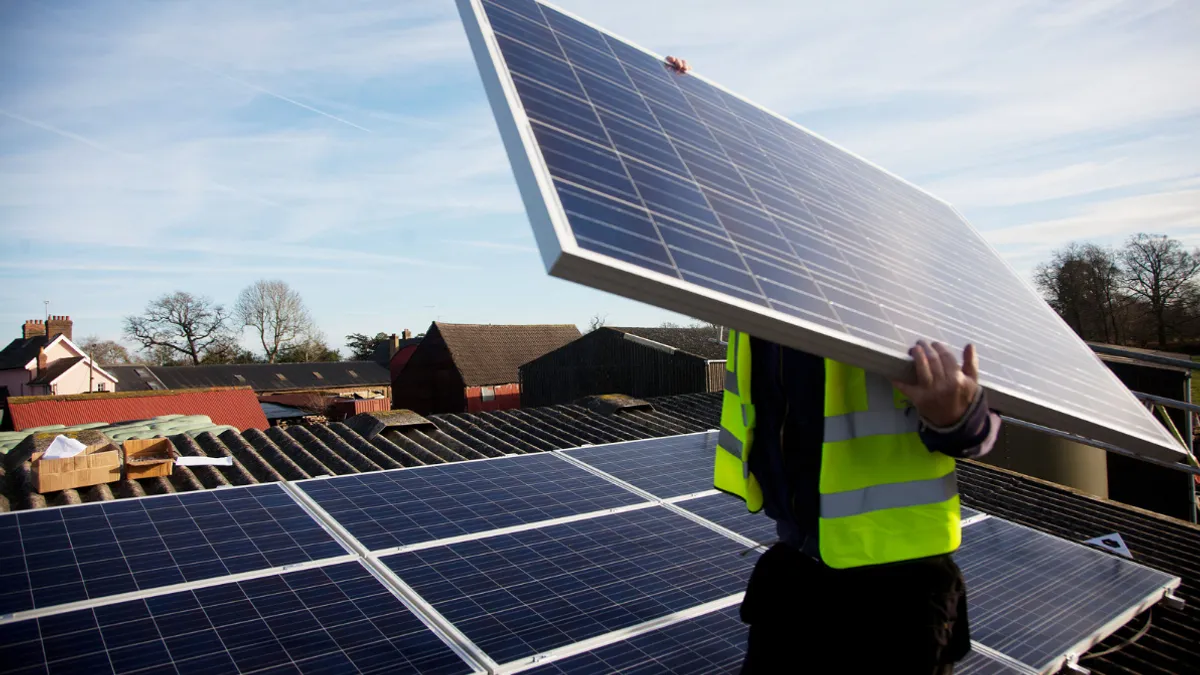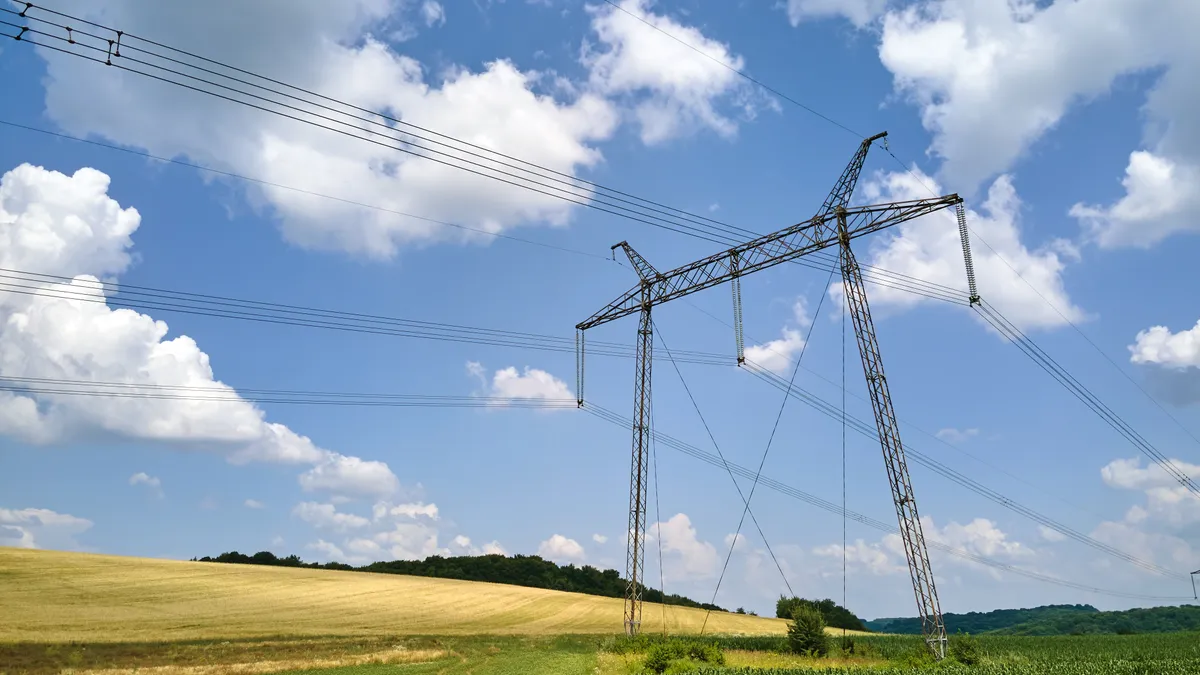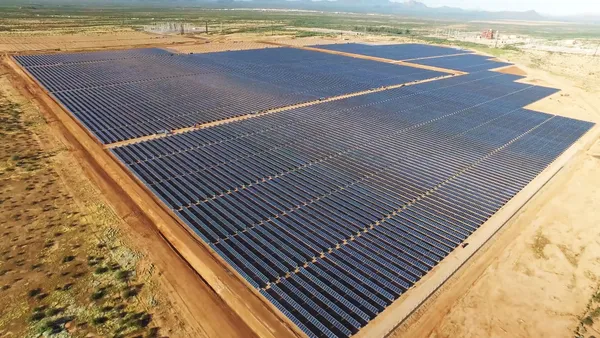Dive Brief:
- Indiana Gov. Eric Holcomb (R) signed into law this week a measure which lowers the retail rate compensation for residents who install devices to use solar or wind power, ultimately phasing out retail net metering.
- The Journal Gazette explains that systems installed by the end of this year will get the retail rate for 30 years, but the rate will be lowered over a series of years for other customers after 2022.
- After 2022, customers with generation installed will be compensated at utility's marginal cost, plus 25%. Indianapolis Power & Light has only about 100 solar customers and none of the state's utilities are close to reaching their 1.5% net metering cap.
Dive Insight:
Indiana's net metering debate was a familiar one, with utilities arguing that solar customers are being subsidized while renewable advocates pressing back that the legislation would kill the industry. The Hoosier state may now see a wave of solar projects installed before the lower rate goes into effect, but opponents of Senate Bill 309 say the long-term impact is on jobs.
The Sierra Club ran a radio campaign opposing the bill as a utility-led effort to kill solar. Signing the legislation means Holcomb "has chosen to go against his No. 1 legislative priority, which is for Indiana to be a magnet for jobs,” Jesse Kharbanda, executive director of the Hoosier Environmental Council, told The Journal Gazette. “SB 309 puts Indiana in a worse off position vis-a-vis our neighbors – and Midwestern competitors – with respect to customer-owned solar energy generation.”
Indiana is a far bigger coal state than solar — the renewable resource makes up less than 1% of Indiana's energy consumption, but grew more than 70% last year. It's unclear how much distributed solar contributed to the power mix, but it's fledgling industry is now threatened by this bill, since one of its biggest incentives will be removed for new customers.
Senate Bill 309 went through many revisions since it was first introduced, with lawmakers scrapping a controversial "sell-all, buy-all" provision and grandfathering existing systems in for decades.
Indiana's rooftop solar debate is similar to ones taking place in other Midwestern markets. Rooftop solar is still a nascent market in that region, and utilities are trying to get ahead of the policy battles cropping up in states with higher penetration. Despite arguing rooftop solar users "shift costs" onto non-rooftop solar users, Indiana's actual rooftop solar customers number in the hundreds. According to an Lawrence Berkeley National Laboratory, the impact of rooftop solar on retail electricity prices "are, and will continue to be, quite small compared to many other issues."















